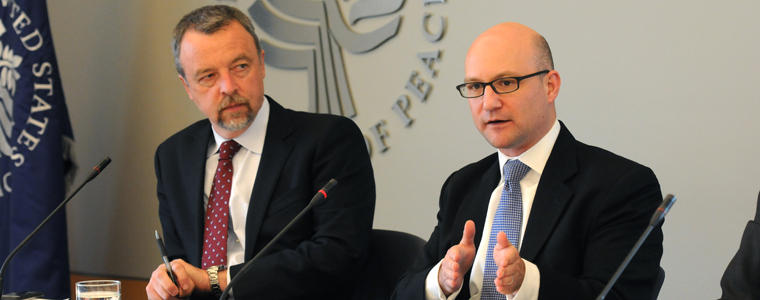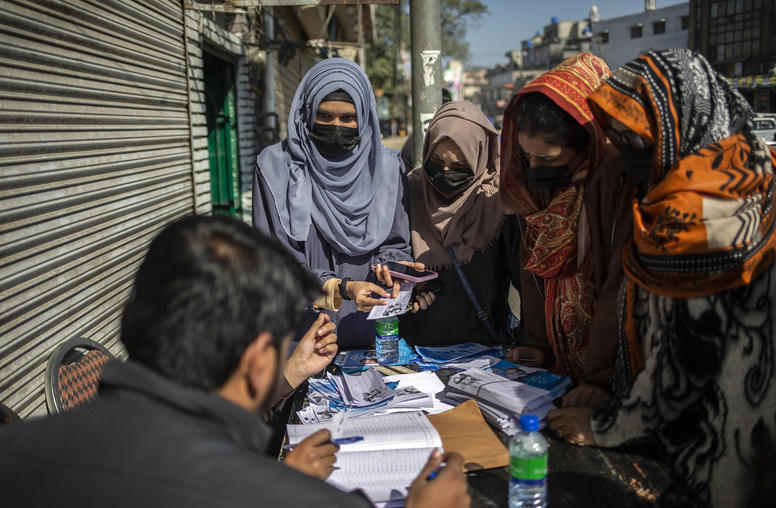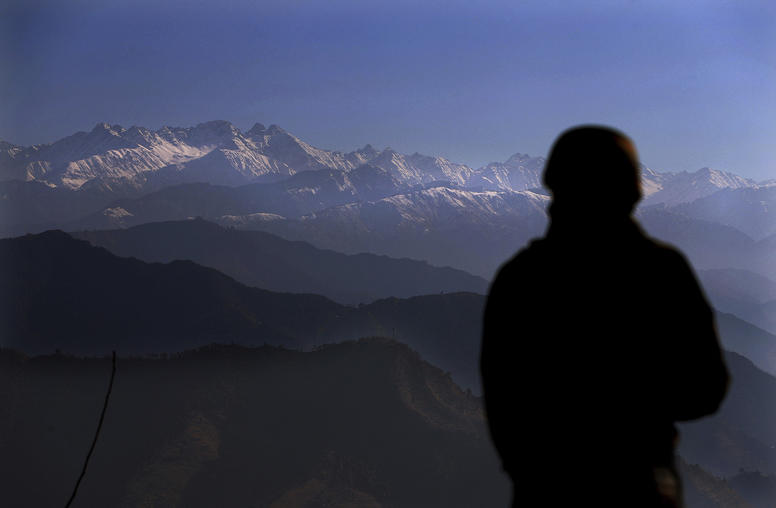USIP Report Examines Barriers to Dismantling Pakistani Militancy
A new Institute report offers an in-depth look at a security issue still confronting U.S. and other policymakers despite years of effort: the formidable internal obstacles to defeating violent militants in Pakistan.

The PeaceWorks report, "Domestic Barriers to Dismantling the Militant Infrastructure in Pakistan," was authored by an American University specialist on South Asian security issues, Stephen Tankel, and launched at a U.S. Institute of Peace (USIP) forum on November 4.
The Pakistani government’s inability to undertake decisive action against an array of Islamist radical groups that have attacked targets domestically and, in some cases, externally has produced tensions between Washington and Islamabad for years. U.S. counterterrorism actions in Pakistan—most recently a reported November 1 drone strike that killed the head of the Pakistani Taliban, Hakimullah Mehsud—have routinely touched off angry Pakistani reactions and official protests even as they underscore the unresolved security challenges in the country.
“It is clear that the [Pakistani] establishment’s preoccupation with maintaining jihadist proxies to be used for geopolitical purposes is still a major barrier to dismantling the militant infrastructure in Pakistan,” said Tankel, who also has affiliations with the RAND Corporation and the Carnegie Endowment for International Peace. But that unwillingness is only part of a much more complex story. “Pakistan faces a number of domestic barriers, many but not all of which are of its own making,” he said at the November 4 meeting.
According to the PeaceWorks report, “The myriad obstacles to countering militancy have become self-reinforcing. Breaking the cycle could take at least a generation. The United States will need to practice patience while preparing for the many contingencies that could result.”
The report describes widespread Pakistani sentiments that “foreign powers support anti-state militants, that some militants will not attack if not provoked,” and it traces the spread of insurgent activity following U.S.-supported incursions against extremists by Pakistan’s military, as well as failed peace agreements that were intended to constrain the spread of militant influence. Tankel said that many Pakistanis, including in the security forces, perceive the U.S.-led invasion of Afghanistan, ongoing pressure on Pakistan to crack down on militants and U.S. drone strikes as stoking the insurgency in Pakistan.
Pakistani officials fear a “blowback” of violence from militants in response to military offensives, and political will is also weakened as some of the militant organizations have built up their political bases and forged links with some mainstream political parties, the report says.
At the same time, Pakistan still lacks an overall strategy to counter militancy, suffers from ineffective legal and judicial processes and inadequate coordination among security agencies and has yet to present “a coherent narrative against extremism” to build public support, the report argues. The new government of Nawaz Sharif’s Pakistan Muslim League-N has already won approval for its National Counter Terrorism and Extremism Policy, but the extent of its implementation remains to be seen and the capacity of Pakistani civilian officials to lead on counterterrorism and counterinsurgency policy lags behind that of the country’s military, Tankel said.
Thomas Lynch, another South Asia security expert appearing on the USIP panel, said “this milieu of groups, well over three dozen by my last count” reflects a history of “state acquiescence if not outright support by the security and intelligence apparatus for groups that are anti-Indian, pro-Sunni and pro-state.” A research fellow at the National Defense University, Lynch said that militancy has been used “as a tool of state, to try to cultivate nationalist Islamists.”
Daniel Markey, a senior fellow at the Council on Foreign Relations, added that internal militancy in Pakistan “has become a fundamental barrier to closer cooperation” with the United States.
Tankel, for his part, urged that as the U.S. and international troop withdrawal in Afghanistan approaches, Washington needs to adapt its strategy on Pakistan along more modest lines. In the report, he calls it “maximizing tactical convergence on narrow security issues and remaining prepared to engage in crisis management should the need arise, while also exploiting opportunities to reinforce positive structural change within Pakistan when possible.” He envisions a diminished focus on a weakened al-Qaida and more on the potential for regional instability. The report recommends that U.S. military assistance should become “transactional—that is, provided in return for assistance or progress in clearly identified areas.” And it suggests more U.S. attention to strengthening “the capabilities and confidence of the new civilian government.”
“Only Pakistan can fix Pakistan,” Tankel said at the USIP meeting. “The U.S. can’t fix this problem [but can] be smarter how we engage.”



